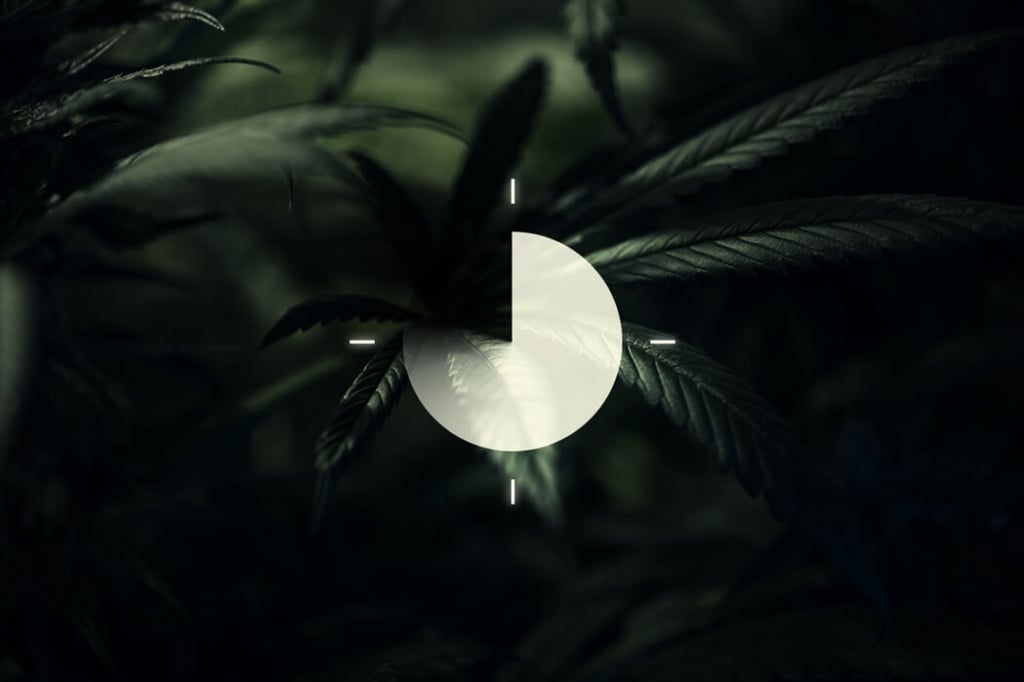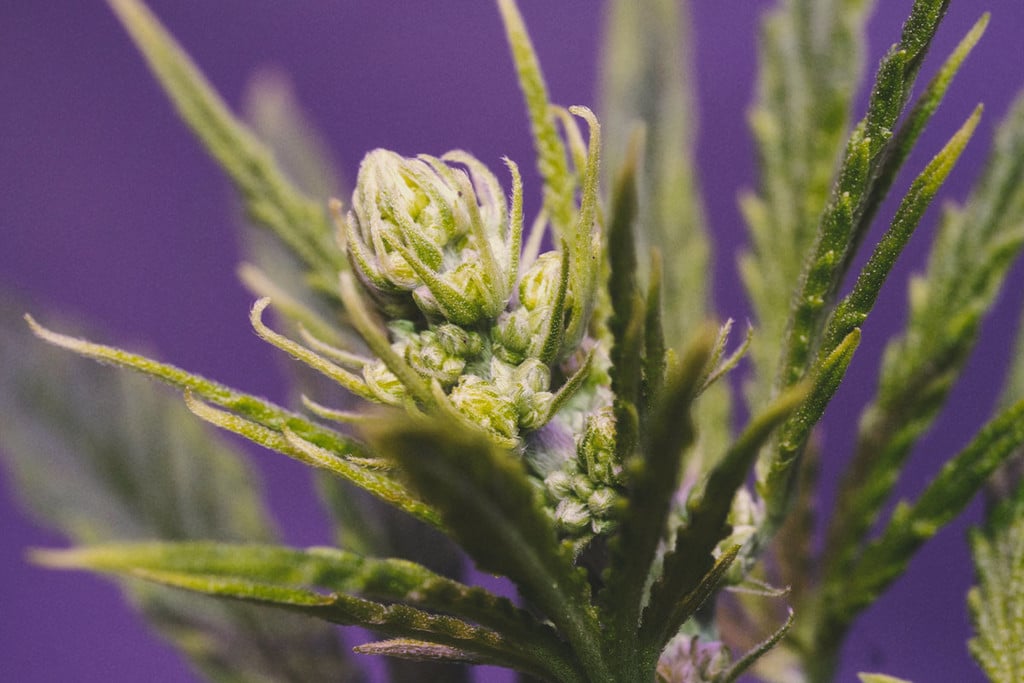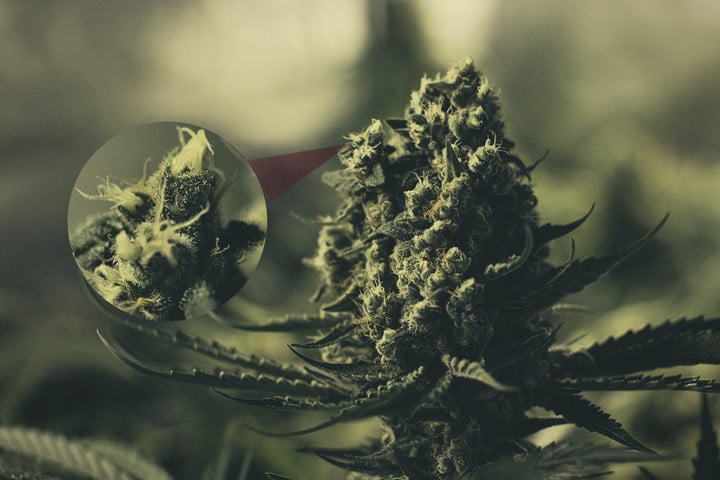 Weed Grow Guide by Royal Queen Seeds
Weed Grow Guide by Royal Queen Seeds
- Growing weed step by step
- Marijuana growing basics
- Choosing your seeds
- How to germinate seeds
- The marijuana vegetative stage
- The marijuana flowering stage
- Harvesting marijuana
- Trimming, drying, and curing
- Choosing pots and soil
-
Growing indoors
- A Complete Overview Of Growing Cannabis Indoors
- Cannabis Cultivation Tips: How To Set Up Indoor Grow Lights
- How Many Cannabis Plants Can You Grow Per Square Metre?
- Indoor Cannabis Growing: Relative Humidity and Temperatures
- Hydroponics Cannabis Growing Guide (with diagrams)
- Cannabis Micro Growing: Growing Great Weed in Tiny Spaces
- Growing outdoors
- How to grow autoflowering marijuana
- Marijuana nutrients and pH
- Marijuana troubleshooting: Nutrients
-
Marijuana troubleshooting: Growing
- Cannabis Seed Germination — Troubleshooting Guide
- How to Deal With Pythium (Root Rot) in Cannabis Plants
- Slow Cannabis Plant Growth And What You Can Do About It
- How to Deal With Leggy Cannabis Seedlings
- Watering Your Cannabis: How to Fix Overwatering and Underwatering
- Understanding Male, Female, And Hermaphrodite Cannabis
- Identifying and Treating Common Cannabis Ailments
- How To Revive a Sick Cannabis Plant
- How to Avoid Moldy Marijuana During Drying and Curing
- How to Prevent and Treat Dry and Crispy Cannabis Leaves
- What Cannabis Leaves Can Tell You
- Causes and Solutions for Yellow Cannabis Leaves
-
Marijuana Strains Grow Report
- HulkBerry Automatic Grow Report
- Blue Cheese Auto Grow Report
- Purple Punch Automatic Strain Grow Report
- Triple G Automatic Grow Report
- Do-Si-Dos Automatic Grow Report
- Green Gelato Automatic Grow Report
- Haze Berry Automatic Grow Report
- Purple Queen Automatic Grow Report
- Cookies Gelato Automatic Grow Report
- Sherbet Queen Automatic Grow Report
- Sweet Skunk Automatic Grow Report
- Medusa F1 Grow Report
- Marijuana plant training
-
Marijuana growing tips
- The Cannabis Plant Anatomy
- How to preserve seeds - RQS USA
- How Much Sunlight Do Outdoor Cannabis Plants Need To Grow?
- How to Control and Prevent Stretching in Cannabis Plants
- My Cannabis Plants Are Growing Too Tall: What Should I Do?
- Should You Worry About Purple Or Red Cannabis Stems?
- What To Do When Your Indoor Cannabis Won’t Flower
- How To Protect Your Cannabis Plants From Heat Stress
- How To Tell If Your Female Cannabis Plant Has Been Pollinated
- Growing Medical Marijuana
- Bud Washing: How to Clean Your Weed
- Understanding Cannabis Yield per Plant

The Importance Of Pistils To Cannabis Growers
Contents:
What are pistils? How are they different from stigmas? And how can learning about these structures improve the way you harvest weed? Discover the answers to all of these questions below. You’re about to upgrade your botany knowledge and improve the quality of your flowers all at once.
What Is a Pistil?
What do you think of when you hear the term “pistil”? Probably the small hairs that protrude from cannabis buds, right? You’re close, but not entirely correct. These small hairs are actually called stigmas. They make up part of the larger pistillate flower, alongside the bract (the small leaf tissue from which stigmas emerge) and the ovule (the organ inside the bract that forms the seeds). Together, these structures make up the reproductive organs of female cannabis plants. In this article, we’ll refer to these hairs as both stigmas and pistil hairs.
Collectively, bunches of pistillate flowers are referred to as buds. Each individual flower possesses two stigmas that stick out into the open air, and each of these strands is covered in small hairs, called stigmatic papillae, that help to catch male pollen after it disperses into the air. As well as playing a key role in plant physiology, stigmas can help growers determine when to harvest their cannabis plants.
Free Pro
Harvest Guide!

When Do White Pistil Hairs Appear?
Pistils appear early on in the flowering stage. The first pistillate flowers to appear are often called “preflowers” because they don’t resemble the large buds that develop later down the line. However, the first of these structures to appear are in fact full pistillate flowers. They develop at the nodes—the points at which branches meet the main stem.
Autoflowering varieties usually start to develop their first pistils around weeks 3–4, whereas photoperiod strains will produce them shortly after the grower reduces the light cycle indoors, or when the seasonal light cycle decreases outdoors.
Beginner growers sometimes become concerned when they see white stigmas appearing at the nodes without any sign of buds. Far from a cause for concern, the sight of these structures means that the buds are well on the way; it’ll just take a few weeks for them to develop.
If you’re growing regular cannabis seeds, you’ll notice that not every plant produces preflowers containing stigmas. The male specimens in the group will instead form spherical pollen sacs. You’ll need to remove these from the growing space unless you intentionally plan on fertilising your female plants.


What Happens if Pistil Hairs Turn Orange Early?
Are your pistil hairs turning orange early? Several factors can cause stigmas to change color relatively quickly. You don’t necessarily have to worry. Some varieties of cannabis simply flower and mature faster than others, meaning their pistil hairs turn from bright white to orange over a smaller window of time.
Both autoflowering strains and fast-flowering photoperiod varieties will undergo this change quicker than photoperiod varieties that have a longer flowering phase. If you’re concerned, check the information on your strain from the relevant seed bank for average growing times.
Indoor lighting schedules can also cause pistil hairs to switch color faster. A cycle of 10 hours on and 14 hours off forces flowers to mature earlier.
Pistil hairs switching color too early can also indicate a problem. Following pollination, these hairs start to display brown tips, while the bottom segment remains white. Unless you’re intentionally breeding plants, chances are you let a male disperse their pollen in your growing space. Likewise, one of your female plants may have become a hermaphrodite and produced pollen.
Pistil Hair Color Differences: What Do They Mean?
Pistil hairs aren’t only white or orange. Based on the phytochemical content of the hairs, they can also display other colors. Check out the different colors of pistil hairs below, and what each of them signifies:
- White: White stigmas indicate that the pistillate flowers are in a state of immaturity and feature a low cannabinoid and terpene content. The grower shouldn’t harvest their buds at this time.


- Orange: Pistil hairs turn from white to orange due to phytochemical changes within the tissue. Triterpenes known as carotenoids are responsible for the vibrant orange colors of a variety of fruits and vegetables, including peppers, oranges, papayas, and carrots. These molecules fulfill numerous functions, including that of color attractants. Stigmas turn orange so that they stand out to pollinating insects. Orange pistils are a sign that cannabis buds are mature, filled with cannabinoids and terpenes, and ready to harvest.
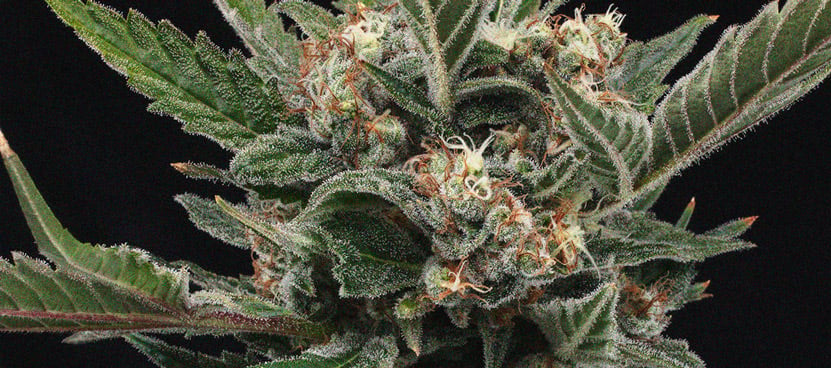

- Brown: A dark brown color on the top section of a pistil hair indicates that fertilisation has taken place. After a particular pistillate flower becomes fertilised by male pollen, the stigma has fulfilled its role and begins to die back, turning brown and shrivelled.
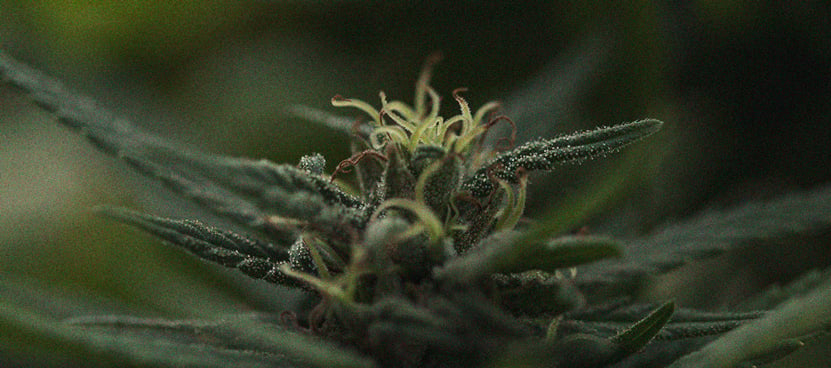
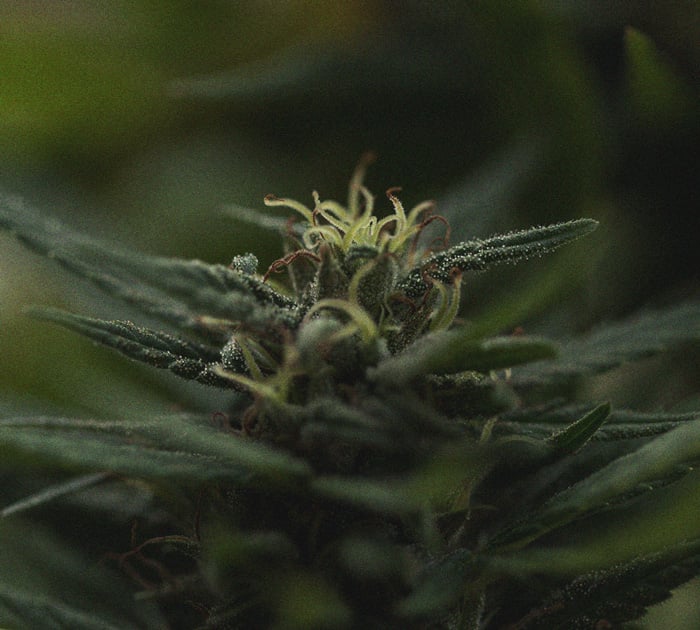
- Red/pink: Sometimes, you’ll also notice pink and red hairs on weed flowers. Much like orange pistil hairs, these colors come about because of chemical changes. Instead of carotenoids, red and pink shades are caused by flavonoid pigments called anthocyanins. These are the same molecules responsible for the striking colors of blueberries, red onions, cherries, and red cabbage. As well as helping to protect plant tissue against UV rays, they also work to attract pollinators. The occurrence of red and pink pistil hairs largely depends on the genetics of a particular strain.


Pistils Signal When to Harvest, But Where Else Should You Look?
Now you know why cannabis pistil hairs change color. As well as playing a physiological role, these changes in appearance can also help growers to know when to harvest their flowers. But stigmas aren’t the only part of cannabis plant anatomy that indicates the maturity of buds. The color of glandular trichomes is an even better way to determine how close plants are to harvest.
When immature, these small chemical factories are translucent in appearance. As harvest time approaches, they develop a milky, opaque appearance. You should aim to harvest your buds when 70–90% of the trichomes have become milky. Leave them much longer, and they’ll turn amber, a sign that THC has degraded into CBN.
 Grow Guide Topic Finder
Grow Guide Topic Finder
- Growing weed step by step
- Marijuana growing basics
- Choosing your seeds
- How to germinate seeds
- The marijuana vegetative stage
- The marijuana flowering stage
- Harvesting marijuana
- Trimming, drying, and curing
- Choosing pots and soil
-
Growing indoors
- A Complete Overview Of Growing Cannabis Indoors
- Cannabis Cultivation Tips: How To Set Up Indoor Grow Lights
- How Many Cannabis Plants Can You Grow Per Square Metre?
- Indoor Cannabis Growing: Relative Humidity and Temperatures
- Hydroponics Cannabis Growing Guide (with diagrams)
- Cannabis Micro Growing: Growing Great Weed in Tiny Spaces
- Growing outdoors
- How to grow autoflowering marijuana
- Marijuana nutrients and pH
- Marijuana troubleshooting: Nutrients
-
Marijuana troubleshooting: Growing
- Cannabis Seed Germination — Troubleshooting Guide
- How to Deal With Pythium (Root Rot) in Cannabis Plants
- Slow Cannabis Plant Growth And What You Can Do About It
- How to Deal With Leggy Cannabis Seedlings
- Watering Your Cannabis: How to Fix Overwatering and Underwatering
- Understanding Male, Female, And Hermaphrodite Cannabis
- Identifying and Treating Common Cannabis Ailments
- How To Revive a Sick Cannabis Plant
- How to Avoid Moldy Marijuana During Drying and Curing
- How to Prevent and Treat Dry and Crispy Cannabis Leaves
- What Cannabis Leaves Can Tell You
- Causes and Solutions for Yellow Cannabis Leaves
-
Marijuana Strains Grow Report
- HulkBerry Automatic Grow Report
- Blue Cheese Auto Grow Report
- Purple Punch Automatic Strain Grow Report
- Triple G Automatic Grow Report
- Do-Si-Dos Automatic Grow Report
- Green Gelato Automatic Grow Report
- Haze Berry Automatic Grow Report
- Purple Queen Automatic Grow Report
- Cookies Gelato Automatic Grow Report
- Sherbet Queen Automatic Grow Report
- Sweet Skunk Automatic Grow Report
- Medusa F1 Grow Report
- Marijuana plant training
-
Marijuana growing tips
- The Cannabis Plant Anatomy
- How to preserve seeds - RQS USA
- How Much Sunlight Do Outdoor Cannabis Plants Need To Grow?
- How to Control and Prevent Stretching in Cannabis Plants
- My Cannabis Plants Are Growing Too Tall: What Should I Do?
- Should You Worry About Purple Or Red Cannabis Stems?
- What To Do When Your Indoor Cannabis Won’t Flower
- How To Protect Your Cannabis Plants From Heat Stress
- How To Tell If Your Female Cannabis Plant Has Been Pollinated
- Growing Medical Marijuana
- Bud Washing: How to Clean Your Weed
- Understanding Cannabis Yield per Plant





























